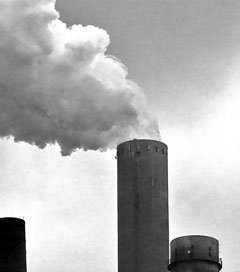Today was a big milestone for people who care about public health and a livable climate. Two utilities announced the planned closure of nine coal plants in Illinois, Ohio, Pennsylvania and New Jersey, bringing total retirements (executed and planned) since January 2010 past the 100 mark to 106.
Two plants in Chicago owned by Midwest Generation, the Fisk Plant and the Crawford Plant, had been a key target for local activist groups. These two plants have been in operation since the early 1900′s and were last updated in the late 50′s and 60′s. Along with violating “grandfathered” (i.e. lax) air quality standards and causing hundreds of emergency room visits each year, the two plants represented the largest source of local greenhouse gas emissions in 2010.
Local and national activists groups, along with the Mayor of Chicago, Rahm Emanuel, put intense pressure on Midwest Generation to shut the plants down.
The second set of plant closures come from the wholesale power provider GenOn Energy, which said it will close 3,140 MW of aging plants in Ohio, Pennsylvania and New Jersey. All of the plants are coal, except for one that is oil-fired. GenOn said new air quality regulations would make it difficult for the company to keep the plants operating.
A confluence of factors is making it very difficult for owners of coal plants — particularly old coal plants — to compete. A combination of high domestic coal prices, low natural gas prices, new air quality regulations, coordinated activist pressure, and cost-competitive renewables are making coal an increasingly bad choice for many power plant operators. Along with the 106 announced closures, 166 new plants have been defeated since 2002.
So just how much of an impact have these factors had on coal closures? Bruce Nilles, director of Sierra Club’s Beyond Coal campaign sent along these numbers:
Existing Coal (Announced/Retired Since Jan 1 2010)
- 106 coal plants, 319 units
- 42,895 MW (13% of fleet)
- 150 million MWh (8% of fleet)
- 162 million tons/year of CO2 (9% of fleet)
- 921,417 tons/year of SO2 (16% of fleet)
- Average age: 55 years old
- (For plants with available data – Data from Clean Air Task Force): 2,042 pre-mature deaths, 3,229 heart attacks and 33,053 asthma attacks prevented each year (about 15% of total health impacts from fleet). All together these plants retiring will save about $15.6 billion in health care costs.
Of course, with questions about the life-cycle emissions of natural gas still unanswered, it remains to be seen how environmentally effective all that gas will be. But with record amounts of investment pouring into renewables and efficiency, and progressive utilities calling increasingly cost-competitive solar “the next big thing in the industry,” the forces are coming together to close the gap.
Join us in defending the truth before it’s too late
The future of independent journalism is uncertain, and the consequences of losing it are too grave to ignore. To ensure Truthout remains safe, strong, and free, we need to raise $47,000 in the next 8 days. Every dollar raised goes directly toward the costs of producing news you can trust.
Please give what you can — because by supporting us with a tax-deductible donation, you’re not just preserving a source of news, you’re helping to safeguard what’s left of our democracy.
